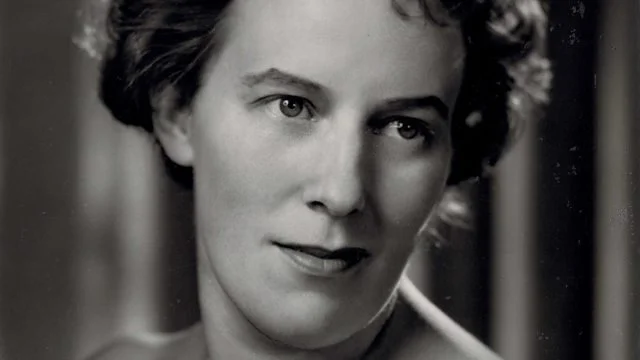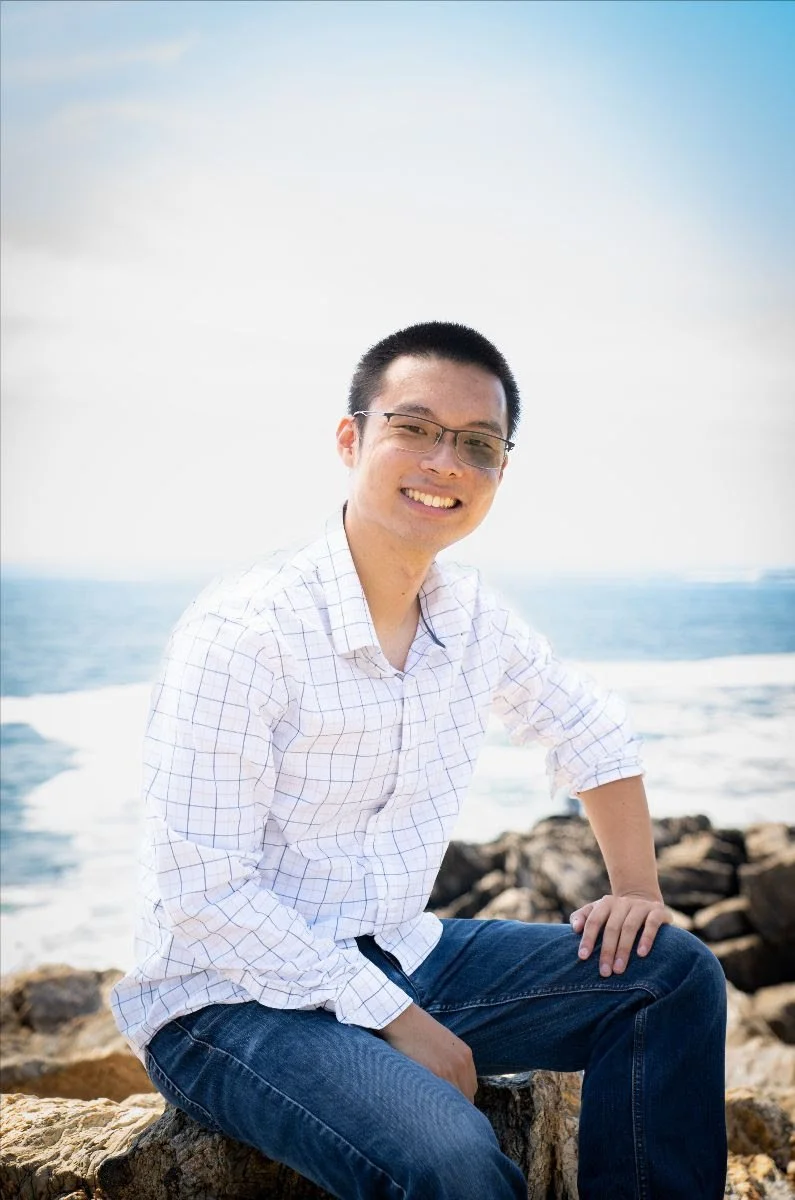welcome to
Saturday, April 27, 2024 at 8:00 pm
Swedish American Hall in SF
Thank you for being a part of One Found Sound’s eleventh season
You make each performance so incredible and unique, and we are thrilled to share this amazing music with you tonight.
• • •
Waveform features lighting and visuals by Andy Highland with Claudia Mulet
program
Ruth Gipps - Seascape, Op. 53
• • •
Sam Wu - Hydrosphere (West Coast premiere)
Winner, One Found Sound’s 2023 Emerging Composer Award
Our Emerging Composer Award is made possible by the Richards family
• • •
Ludwig van Beethoven - Symphony No. 3 in E-flat Major, Op. 55, “Eroica”
I. Allegro con brio
II. Marcia funebre: Adagio assai
III. Scherzo: Allegro vivace
IV. Finale: Allegro molto—Andante—Presto
land acknowledgement
One Found Sound respectfully acknowledges that the land on which we are gathered for this performance, and on which we have gathered for our rehearsals, is located on the unceded ancestral homeland of the Ramaytush Ohlone peoples—specifically the Yelamu—an independent tribe of the Ramaytush Ohlone that once inhabited what is now known as San Francisco County.
We share our acknowledgement with you to pay our respects to the ancestors, elders, descendants, and relatives of the Ramaytush Ohlone peoples; to affirm and promote consciousness of the cultural and sovereign rights of First Peoples; as a step in our continuing efforts to recognize the ongoing atrocities and brutalities of colonialism; and as a step in understanding our place in the process of decolonization and reconciliation as individuals, as artists, as an orchestra, and as a community.
We recognize that the Ramaytush Ohlone Peoples, as the original stewards of this land, understood the interconnectedness of all things and maintained harmony with nature for millennia, and we honor them for their enduring commitment to Mother Earth.
———
Visit and support the Association of Ramaytush Ohlone online at ramaytush.org
one found sound
violin
Annamarie Arai-Lopez
Ignacio Delfin
Paul Kim
Michelle Maruyama
Homer Hsu
Scot Moore
Darren Sagawa
Corina Santos
Thomas Yee
Vita Yee
viola
Jacob Joseph-Hansen
Charith Premawardhana
Alexandra Simpson
Alex Volonts
cello
Byron Hogan
James Jaffe
Helen Newby
Saul Richmond-Rakerd
bass
Antonio Escobedo
Scott Padden
flute
Tori Hauk
Sasha Launer
oboe
Jesse Barrett
Colton Potter
clarinet
Sarah Bonomo
Rebecca Tobin
Clarinet chair sponsored by Dr. Hilary Beech, in memory of David Beech
bassoon
Georgeanne Banker
Jamael Smith
horn
Sophia Chen
Craig Hansen
Erika Miras
trumpet
Ari Micich
Charles Ryan
percussion
Divesh Karamchandani
Jimmy Chan
Timpani chair sponsored by Amy Sadoff and Rick Launer
Ruth Gipps (1921-1999)
Seascape, Op. 53 (1958)
Ruth Gipps
Ruth Gipps gave her first piano recital at the age of four, and from then on sustained an incredible musical career until her death at the age of 78. Born in 1921 in the quiet coastal town of Bexhill-on-Sea in the south of England, Gipps was a child prodigy who grew into an accomplished pianist, oboist, conductor, and composer. After graduating from the Royal Conservatory of Music—where she studied piano, oboe, and composition—Gipps founded the London Repertoire Orchestra and led the City of Birmingham Choir. Despite her many talents, throughout her life Gipps struggled “to gain acceptance as an equal in the male musical establishment,” writes Bret Johnson.
Seascape was composed in 1958 for the Portia Wind Ensemble, an all-female group founded by English clarinetist Thea King. Scored for a double wind quintet including English horn (cool!), Gipps crafts a poignant rhapsody through the confluence of the ensemble’s unique timbres.
Whether its flowing melodies remind you of glittering views of the Bay or sandpipers delighting beneath the dense fog of Ocean Beach, Seascape is a breath of fresh, salty air that awakens all your memories and visions of the sea.—Georgeanne Banker
Sam Wu (b.1995)
Hydrosphere (2022)
Sam Wu
Photo by Niles Singer
"Hydrosphere is inspired by the water cycle––a macroscopic, planetary process that shapes oceans and continents. Water is the source of life as we know it; its eternal cycle accompanies generations across the aeons." — Sam Wu
Through sections titled clouds, oceans, mountains, and streams, Hydrosphere submerges us in sounds that celebrate and venerate the waters of our planet.
Sam Wu's music deals with the beauty in blurred boundaries. Many of his works center around extra-musical themes: architecture and urban planning, climate science, and the search for exoplanets that harbor life.
Sam’s collaborations span five continents, notably with the orchestras of Philadelphia, New Jersey, Minnesota, Sarasota, Melbourne, Tasmania, and Shanghai, New York City Ballet, Sydney International Piano Competition, the Lontano, Parker, Argus, ETHEL, and icarus Quartets, conductors Osmo Vänskä, Case Scaglione, and Benjamin Northey, and sheng virtuoso Wu Wei. From Melbourne, Australia, Sam holds degrees from Harvard University and The Juilliard School, and is a DMA candidate at Rice University's Shepherd School of Music.
”The interconnectedness of our world is a major theme in my music. In an age where a night’s sleep is all it takes to travel halfway around the world, and where Bach and Mongolian throat singing can occupy adjacent YouTube tabs, I explore and seek inspiration in non-Western musical traditions, even as I write and perform works within the classical lineage. I am interested in bridging apparent differences between cultures and musicians, and in doing so, seeking the subcutaneous common ground that we share as human beings.” Read more at samwumusic.com.
Emerging Composer Award
Sam Wu is the winner of One Found Sound’s 2023 Emerging Composer Award. This annual award focuses on the performance of new music by aspiring young composers under the age of 30, and emphasizes works by those from historically excluded groups. Our Emerging Composer Award is made possible by the generous support of the Richards Family.
Ludwig van Beethoven (1770 - 1827)
Symphony No. 3 in E flat Major, Op. 55, “Eroica” (1803-4)
I. Allegro con brio
II. Marcia funebre: Adagio assai
III. Scherzo: Allegro vivace
IV. Finale: Allegro molto—Andante—Presto
Ludwig van Beethoven
Joseph Karl Stieler
“I am far from satisfied with my past works," Beethoven reportedly said around the year 1802, "from today on I shall take a new path.”
The following year, the 32-year-old Ludwig van Beethoven, tormented by his deteriorating sense of hearing, began to sketch his Third Symphony.
Enthralled by the ideals of the French Revolution—and possibly planning a move to Paris (that never materialized)—Beethoven originally titled the work for Napoleon Bonaparte. However, the composer scornfully revoked this dedication after Bonaparte crowned himself emperor in 1804—tearing the title page in two and scratching out the newly minted emperor's name so emphatically his quill tore through the manuscript. Betrayed by Bonaparte’s assumption of absolute power, he re-titled this work the “Heroic Symphony, composed to celebrate the memory of a great man.”
Beginning with a bang (well, two bangs), this truly epic work is a thrilling departure from Beethoven's earlier style, and from pop music as it was in the early 19th century.
In 1802 Beethoven was living in Vienna, where he had really established himself as one of the most brilliant musicians and keyboard improvisers in town (and there was a lot of competition!). Despite his dazzling success, Beethoven was struggling with his health—particularly his hearing loss—and in the spring of that year his doctor advised him to spend some time in the countryside just outside of the city, in a town called Heiligenstadt. It was there Beethoven grappled with his failing sense of hearing, and in the throes of despair he composed a heartbreaking letter to his brothers Carl and Johann:
“Oh you men who think or say that I am malevolent, stubborn, or misanthropic, how greatly do you wrong me. You do not know the secret cause which makes me seem that way to you…for six years now I have been hopelessly afflicted, made worse by senseless doctors, from year to year deceived with hopes of improvement, finally compelled to face the prospect of a lasting malady (whose cure will take years or, perhaps, be impossible)…
“…it was impossible for me to say to people, "Speak louder, shout, for I am deaf." Ah, how could I possibly admit an infirmity in the one sense which ought to be more perfect in me than others…what a humiliation when one stood beside me and heard a flute in the distance and I heard nothing, or someone heard the shepherd singing and again I heard nothing, such incidents brought me to the verge of despair, but little more and I would have put an end to my life — only Art it was that withheld me, ah it seemed impossible to leave the world until I had produced all that I felt called upon me to produce, and so I endured this wretched existence….”
This letter, now known as the Heiligenstadt Testament, went unsent and unread until after Beethoven’s death some 25 years later.
In the year following his stay at Heiligenstadt, Beethoven began to write his Sinfonia Eroica.
The work, which was nearly twice as long as standard symphonies of the day, is a bit of a puzzle. The first movement is a grandiose heroic journey that joyfully toys with our expectations of harmony and time. Here Beethoven includes a sneaky horn entrance that foreshadows the recapitulation of the movement’s thematic material. This musical “trick” really got Beethoven’s student and secretary Ferdinand Ries, who recalled:
“During the first rehearsal, which went appallingly, the horn player came in correctly. I was standing next to Beethoven and, thinking it was wrong, I said ‘that damned horn player! Can’t he count properly? It sounds horrible!’ I think I nearly got my ears boxed. Beethoven did not forgive me for a long time.”
The second movement is a funeral march that evokes the pomp and grandeur of a mournful processional, moving slowly through wide avenues as the sun peaks through the clouds, and as rain beats down on those paying their respects. The third movement is somewhat of a non sequitur that’s set as a lively scherzo, or “joke.” A wondrous central trio section features three horns ready for the hunt as they drive the blazing orchestra through the brilliant green countryside. The last movement is a colorful set of themes and variations that flit on and off stage like characters in a comic opera. The themes themselves both stand alone and fit together as one assumes the role of bass line and the other melody. Throughout this movement Beethoven does an improvisatory flex as he weaves wondrously complex counterpoint out of each simple tune. Moments of reflection and darkness are balanced by those of radiant joy as the symphony runs to its triumphant end.
While Beethoven's Third might be over 200 years old, its messages of valor, pathos, joy, and hope still speak to the the beautiful tenacity and creativity of the human spirit. —Georgeanne Banker
Thank you for being a part of One Found Sound!
From artist compensation to concert production costs, your support helps our orchestra thrive. All proceeds from tonight’s event will support our 2024-2025 season, helping us bring classical music to wider audiences in our community through unique concert experiences.
Thank you for making your tax-deductible contribution at our performance tonight, or by clicking the link below.
Become a Onesie! Chat with us at the Onesie table tonight, or visit us online, or email Katherine Cox at katherine@onefoundsound.org to learn more about joining our exciting patron program.
NOW That’s What I Call A Gala - Volume 11!
One Found Sound’s annual fundraiser is coming up on Saturday, June 8, 2023 at Heron Arts!
Save the date — this June we’re bringing your favorite throwback hits from *NSYNC, K-Ci & JoJo, Britney, Radiohead, and more! So dress in your dELiA*s best and bust out those choker necklaces (they’re in again!) and don’t miss this extra special fundraising extravaganza with a nostalgic twist! This event includes a silent auction and many ways to make your gift and help us keep the music playing in 2025 and beyond.
Stay tuned for sponsorship opportunities, tickets, and event details! 🎟
Thank you to our Onesies!
Crystal
$10,000 annually or $2,500 quarterly
Anonymous
James F. Bonomo, Gabriella Bonomo, Adam Bonomo, Kitty
Ruby
$5,000 annually or $1,250 quarterly
Anonymous
Rick Launer and Amy Sadoff
Connie Zweigle
Emerald
$2,500 annually or $625 quarterly
Anonymous
Dr. Hilary Beech, in memory of David Beech
Jeff Padden
Mark Slee & Chloé Blain
Brad Taylor
Diamond
$1,000 annually or $250 quarterly
Anonymous (2)
Amy Barrett-Daffin
Gerard Buulong & Fred Silverman
Beau Davenport
Linda Dembo and Stephen Smoliar
Erik Goldman
Dean Gooch
Brien Henderson
Zack Launer
Yaju Nagaonkar
Peter Nelson
Richards Family
Marco Rozzano
Andrew Watterson and Keith Kurson
Velvet
$500 annually or $125 quarterly
Anonymous (4)
Alessandra Aquilanti & Josh Walden
Elizabeth Arai
Bill & Shirley Banker
Ann & Scott Botel-Barnard
Frank Dad
Samantha Goldstein
Riccardo Guidi
Melissa G. Hernandez
Curt Holzinger
Kala Perkins
Christopher Slee
Tom and Karen Tsueipauer
Chris Zweigle
Sparkle
$200 annually or $50 quarterly
Martin & Kathleen Cohn
Sherri Cornett & Steve Kriner
Lisa Eltinge and Jonathan Burton
E and J
Julia Finn & Alex Vigdorovich
Suzanne Garnier
Jennie Gisslow
Jon Gooblar
Phil & Valerie Heller
Steven Horwitz
Donna & Mike Kaplan
Cynthia Launer & Will Thomas
César Lopez-Nataren
Helise Mack
Ken Marson
Utthara R.
Susan Raeburn
Johnny Sadoff
Michel Taddei
Paul Van Cleave







